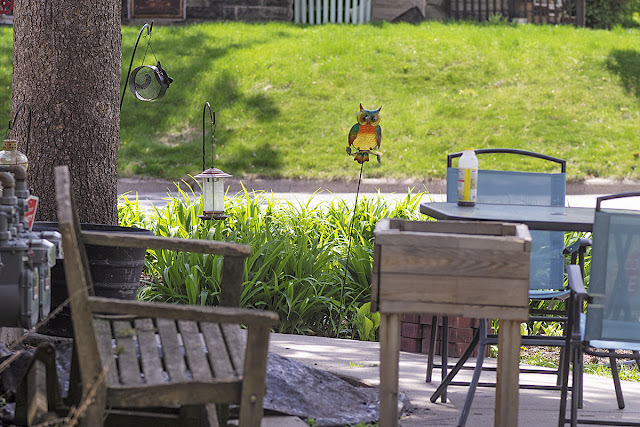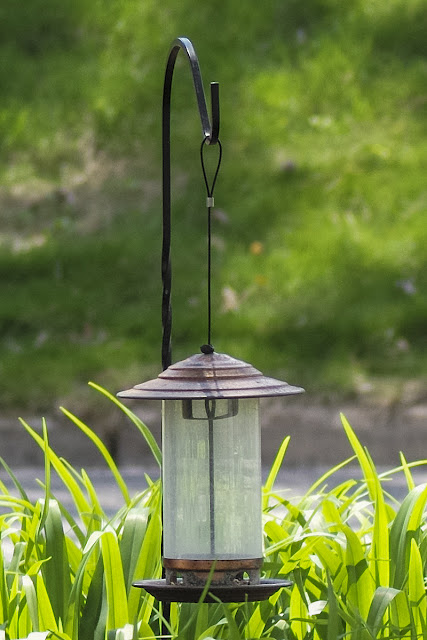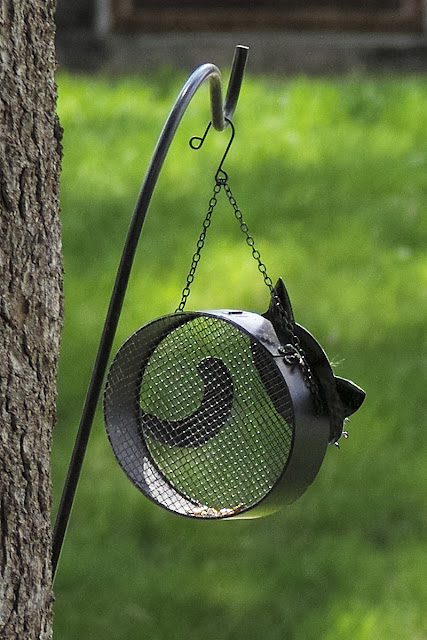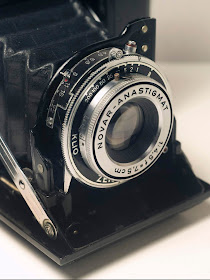
Last fall I published a
brief article showing what Leica equipment I own and use. I constantly get asked what camera and lenses
I have and why I chose them. So I decided to be more specific. Please keep
in mind this is not meant to influence anyone to invest in certain equipment,
it is simply an explanation of what I own and why.
My first digital Leica was
a Leica Digilux 2. I bought it because
it had a performance level at that time that was able to do a lot of the work
that previously I had done with film. Of
course things have progressed substantially and I now shoot with a Leica M240.
I am fully aware of the
advantages of the Leica M10, but they are not at a level of importance to cause me to
change. The M240 is serving me well and
will do so for some time to come.
For instance, the larger
size of the M240 does not bother me at all.
As a matter of fact, for some time in the past I used a Zeiss Contarex. The M240 is rather diminutive in comparison.
At times the higher ISO capabilities
of the M10 would be nice to have, but I hardly ever use or publish any photographs
that have not been improved by post processing.
That includes the higher noise levels of the M240 at high ISO
settings. Subsequently, the higher ISO
capabilities of the M10 are not overly important to me. The M10 doesn’t offer enough of an advantage for me to warrant the expense of switching.

The obvious advantage of a camera with interchangeable lenses lies in the fact that, based on the work one does, it is possible to choose a lens that's best for the job at hand. In general, that includes the so-called normal lenses which give a field of view closest to the human eye. For full frame (as well as 35mm cameras) that is the 50mm focal length. From there, anything with a shorter focal length is considered a wide angle lens and anything longer is a telephoto lens.
The core of my lenses is a 28mm f/2.8 Elmarit, a 50mm f/2 Summicron and a 90mm f/2.8 Elmarit. They are excellent performers and have not given me any cause to change them. Would it be nice to have faster versions of these lenses? From time to time yes! The extra depth of field control and bokeh of a 90mm f/2 or 50mm f/1.4 would come in handy from time to time, even more so with the the 50mm f/.95 Noctilux. But not to the extend to cover the extra cost.
The core of my lenses is a 28mm f/2.8 Elmarit, a 50mm f/2 Summicron and a 90mm f/2.8 Elmarit. They are excellent performers and have not given me any cause to change them. Would it be nice to have faster versions of these lenses? From time to time yes! The extra depth of field control and bokeh of a 90mm f/2 or 50mm f/1.4 would come in handy from time to time, even more so with the the 50mm f/.95 Noctilux. But not to the extend to cover the extra cost.
Leica Elmarit 28mm f/2.8, ISO 1000, f/11, 1/90 sec handheld
Extreme crop from the original file
Leica Summicron 50mm f/2, ISO 640, 1/1500 sec, f/11
Leica Elmarit 90mm f/2.8, ISO 160, 1/180 sec, f/11, Studio Strobe
I have been asked if a
35mm wouldn’t be worthwhile to have. I
admit that I have often thought of adding that focal length. But the 28mm Elmarit performs so well that I have
no problem cropping a file from the 28mm to obtain a narrower field of view, including that of a 35mm.
I rarely, if ever, make real big enlargements;
this allows me to use cropping with all of my lenses as a tool to overcome one or more missing focal
lengths. As a matter of fact, cropping
has allowed me in many instances to overcome the fact that for a rangefinder
camera like the M240, zoom lenses are unfortunately not available.
Voigtländer 15mm f/3.8, ISO 1250, f/4.5, 1/60 sec, f/3.8
Voigtländer Super Wide Heiar 15mm f/4.5, ISO 320, 1/1000 sec, f/8, raw file
Voigtländer Super Wide Heiar 15mm f/4.5, ISO 160, 1/250 sec, f/11
Extreme cropping reveals the limitations of the Voigtländer 15mm Heliar
At the far end of the
lenses I have are a 15mm f/4.5 Voigtländer Super Wide Heliar and a 135mm f/2.8
Elmarit. I bought the Voigtländer because
occasionally I run into situations where the 28mm is not quite wide
enough. But these occasions are rather
rare and thus did not warrant the expense of a Leica lens. The 135mm Elmarit on the other hand is a lens
that I do use fairly often. Much of my work
is portraits or portrait related. A lot
of people that are not used to being in front of a camera on a regular basis
are often quite apprehensive. For closer
shots, like head shots, I found it to be quite advantageous to use the 135mm instead of the 90 or
even more so the 50 because I can work at a greater distance which can put the
person in front of the camera more at ease.
Leica Elmarit 135mm f/2.8, ISO 800, 1/30 sec f/2.8
On and off I do some
wildlife and close-up work. Some time
ago I picked up a Nikon 55mm Macro Nikkor and a 105mm Micro Nikkor. They sat around until I got the M240. With the electronic viewfinder and a Nikon to
Leica M adapter I have two rather well working macro lenses that serve me
well.
Micro Nikkor 55mm f/3.5, ISO 2000, 1/125 sec, f/11

Leica M240 with Novoflex
200mm f/3.8

Leica M240
with Novoflex 400mm f/5.6
For wildlife work I use a
Novoflex 200mm f/3.8 and a 400mm f/5.6.
I was able to pick both of them up for next to nothing and I have found
that they are equal or at least very close in performance to equivalent Leica
lenses. Especially the 200mm has an amazing
performance potential. That seems to be partially
due to the fact that both lenses are of the same design as the former 400 and
800mm Telyt lenses from Leica. Another reason was the ease of focusing of the Novoflex Follow Focus lenses. Unlike any other lens, they use a spring loaded pistol grip for focusing. Releasing the grip will set the lens to its minimum focusing distance. Squeezing the grip will focus to infinity. Once used to it, this has proven to be very fast.

Novoflex 200mm f/3.8, ISO 800, 1/350 sec, f/8, handheld

Slightly
cropped

Cropped
detail of the same file

Cropped
detail of the same file
Novoflex 400mm f/5.6, ISO 160, 1/250 sec, f/11
Novoflex 400mm f/5.6, ISO 160, 1/250 sec, f/11, handheld from a boat
Novoflex 400mm f/5.6, ISO 160, 1/30 sec f/5.6, handheld
Yes, it's a lucky shot
Would another camera
system be something for me to consider?
I have toyed with the idea of a Leica SL. But when I think back to the days when I used
a Leica R3 and R4, I feel that just like then, sooner or later I would gravitate back to an M
camera. I started out many years ago
with a Leica III. I guess that ultimately
made me a rangefinder shooter. I may add
another camera at some time in the future, but I will always have a Leica rangefinder
system at my disposal.

For other articles on this blog please click on Blog Archive in the column to the right
_____________________________________________________________________
_____________________________________________________________________
 Buy vintage Leica cameras from
America's premier Leica specialist
Buy vintage Leica cameras from
America's premier Leica specialist
http://www.tamarkinauctions.com/ http://www.tamarkin.com/leicagallery/upcoming-show
Buy vintage Leica cameras from
America's premier Leica specialist
http://www.tamarkinauctions.com/ http://www.tamarkin.com/leicagallery/upcoming-show
Click on image to enlarge
Order: info@gmpphoto.com
Please make payment via PayPal to GMP Photography
Click on image to enlarge
Order: info@gmpphoto.com
Click on image to enlarge
Order: info@gmpphoto.com
Click on image to enlarge
Order: info@gmpphoto.com
Please make payment via PayPal to GMP Photography
Click on image to enlarge
Order: info@gmpphoto.com
Please make payment via PayPal to GMP Photography
Click on image to enlarge
Order: info@gmpphoto.com
Please make payment via PayPal to GMP Photography




































